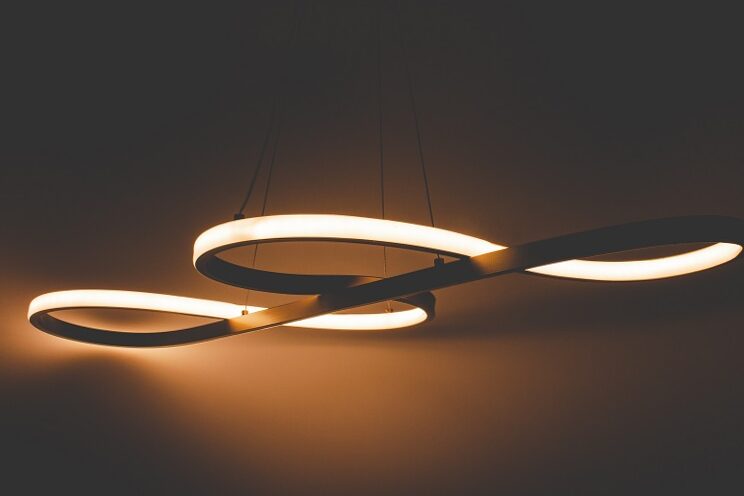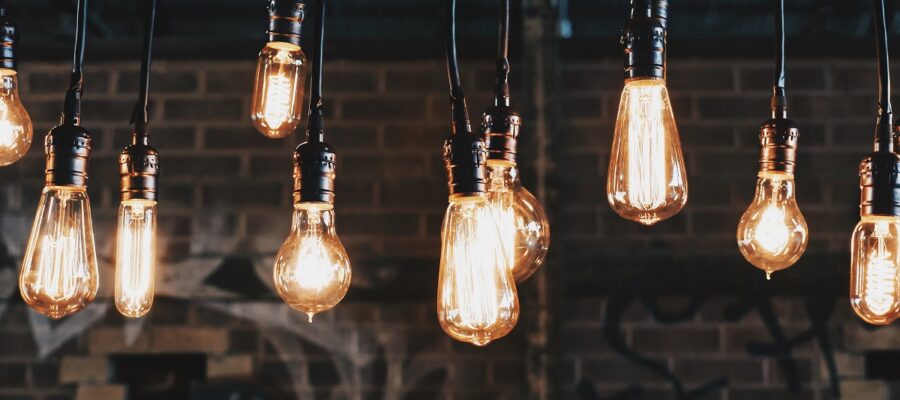LED devices surround us and tend to supplant traditional bulbs. If they have more advantages, to name only low energy consumption, they are also with some disadvantages. Here are some useful information on the fileLED lighting.
LED technology, what it is
The LED (light emission code), of the (electroluminescent diode) or SSL (solid state lighting) are all names for this lighting system that has gained a considerable staircase since 2010, thus dethroning haalogs and incandescent bulbs. The LED describes itself as an opto-electronic component, which means that this electronic element emits light as soon as it is crossed by an electric current.
LED lighting It has been used for a few decades in devices such as cell phones and some television work models. His performances have allowed him to conquer the market for professional and domestic lighting.
If we talked about Watts for incandescent bulbs, we talk about lumen (LM) to measure the power of LED bulbs. Kelvins (K) are unit of color temperature.
The strengths and disadvantages
If this type of light is particularly appreciated, the reasons are multiple. However, some areas of improvement must not be excluded.
The advantages
The main advantage of GuidedIt is that he is a low energy consumer. Add to this the fact that it provides a much more satisfying light, despite having a life of life up to 15 times greater than incandescent bulbs. In fact, it is resistant to low temperatures and shock. And it does not record any drop in performance in the face of repeated ignitions.
Always in this ecological objective, the LED is a particularly respectful lighting device of the environment, to the extent that it does not contain lead or mercury, and the LED devices they are mostly recyclable. Furthermore, it does not emit UV rays.
LED lends itself to all creative ideas. It is suitable for the desk lamp and the other directional lighting, as well as for wall lighting or for decorative use. Since the LED can request different colors, it is therefore easy to use it for personalized and ornamental use. As for the heat variants, you can go hot white, between 2,300 k and 3,200 k, with cold white, more than 8,000 k.
Improvement points
If in use, the LED consumes little, consume energy during the production phase. The process implies the use of Gali and Indio, of exhausted resources. Their replacement with other materials is in the studio.
The light pollution caused by the massive use of led bulbs is also implicated. As a result, the astronomer association had the citations that we tend to close the retina because the LED bulb is dazzling and therefore the vision decreases. To this is the fact that, according to the handles, the blue light produced by led devices interrupts sleep and organic rhythms.

Several criteria must be taken into consideration when choosing the LED bulb, and here are the main ones:
- Light comfort: the lumens vary depending on whether it is an atmosphere or a ceiling light;
- The rendering of light: the power of the LED is different for a stay, a job or a corridor;
- The color performance index or IRC: it goes from 1 to 100, 100 being the brightness closer to that of sunlight.
- The color temperature: for example, hot white is suitable for a relaxing atmosphere, white is ideal for intense lighting (hospital, factory, company room, etc.)
- The duration of life: some models last 30,000 hours, others spend up to 100,000 hours.
Precautions for use
In addition to these parameters of choice, some user suggestions apply. At the time of purchase, it is advisable to rely only on the mass marked in CE. Once installed, it is preferable to maintain a distance of at least 20 cm between you and the bulb, to avoid any prejudice to the sight. While avoiding fixing the sun, it also avoids doing it for a LED lighting.
Conclusion
Environmental protection is a concern that affects us all, and everyone has a crucial role to play in combating pollution and resource depletion. Electronic devices, in particular, represent a significant source of environmental harm when discarded improperly, as they contain hazardous materials that can contaminate soil and water. With the growing use of these devices, their waste has become an urgent ecological issue.
One of the most effective and sustainable solutions to this problem is to prioritize repair over replacement. Repairing electronic equipment not only extends its lifespan but also reduces the demand for new devices, thereby minimizing resource extraction, manufacturing emissions, and electronic waste. This approach conserves valuable materials and energy, contributing significantly to reducing the overall environmental footprint.
Additionally, choosing to repair rather than discard fosters a mindset of responsibility and sustainability among consumers, encouraging more thoughtful consumption habits. It also supports local repair industries and can be more cost-effective in the long run.
In summary, repairing electronic devices is an ecological alternative with numerous advantages. By embracing repair, users can help protect the environment, reduce pollution, and promote a circular economy where resources are reused rather than wasted. Collective efforts in this direction are vital to preserving our planet for future generations.
latest posts published

Do difficult things!

Does yoga start alone, at home, good or bad idea?

Connected watches: take off!

How to alleviate and avoid them

How to lose your thighs? Exercises, suggestions and nutrition

Remote to sport in winter, the light track!

Solutions, exercises and suggestions to help you!

Substitutes of meals: real slimming allies?

Dry January: Return of experience!


